WANT EVEN MORE HEALTHY IDEAS FROM SHAPE YOUR FUTURE?
When you decide to start eating healthy, the first place your eyes may look is the nutrition label. However, fumbling through the black-and-white text full of unfamiliar nutrients and confusing numbers will probably leave you feeling discouraged and confused rather than empowered. If you feel overwhelmed in the grocery store, these tips to decode a nutrition label can help!
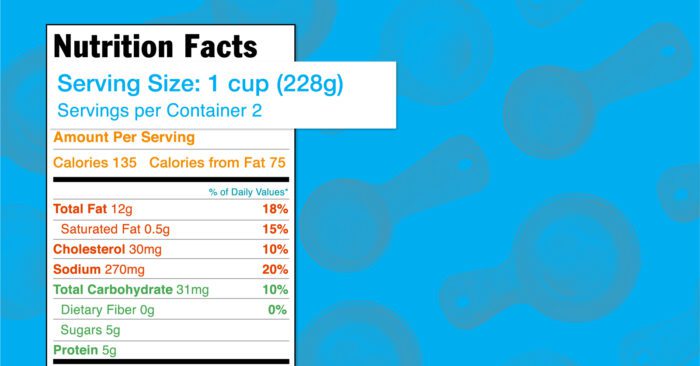
1. Start with the serving size
The serving size is the key that unlocks the rest of the nutrition label’s information. This line lets you know how much food you can dish out to make the rest of the label accurate and tells you how many servings are in the container to help you plan. The nutritional facts listed below are based on one serving size. So, if the package contains two servings, double the nutrition values.
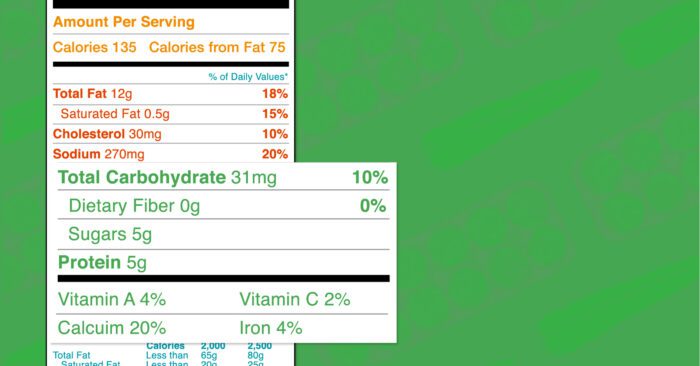
2. Know which nutrients fuel your body
As you shop, look for nutrients like protein, fiber, iron, vitamins and minerals. These nutrients provide nourishment and support that boosts your immune system, helps you break down foods and keeps you full. These are building blocks your body needs to thrive and stay healthy.
Here’s a list of a few common nutrients and how they positively impact your body:
- Calcium: Improves bone and teeth health. Look for it in dairy products.
- Fiber: Helps the body digest food and lowers cholesterol. Find it in most fruits, veggies and whole grains.
- Folate/folic acid: Helps form red blood cells and can contribute to a healthy pregnancy. Leafy, dark-green vegetables are a great source of folate and folic acid.
- Iron: Carries oxygen from the lungs to the rest of the body. Look for it in whole grains and proteins.
- Magnesium: Helps the body make protein, create energy and promotes healthy bones. Find magnesium in most fruits, veggies, whole grains and proteins.
- Omega-3 fatty acids: Helps reduce the risk of heart disease. Look to seafood for these nutrients.
- Phosphorus: Helps form strong bones and raises energy levels. Fruit, veggies and dairy are all generally high in phosphorus.
- Selenium: Strengthens the immune system. Find it in whole grains.
- B vitamins: Prevents blood clots and keeps your nervous system healthy. Fruits, veggies and proteins are high in B vitamins.
- Vitamin A: Fights infections and strengthens your immune system. Orange and green veggies (like carrots!) are high in vitamin A. You can also find it in dairy and eggs.
- Vitamin C: Boosts your immune system. Look to citrusy fruits for your daily dose.
- Vitamin D: Builds and maintains bones. Find it in most dairy products.
- Vitamin E: Protects your cells from harmful chemicals outside the body. Fruits, veggies and proteins are great sources.
- Zinc: Strengthens the immune system. Look to proteins for your daily zinc.
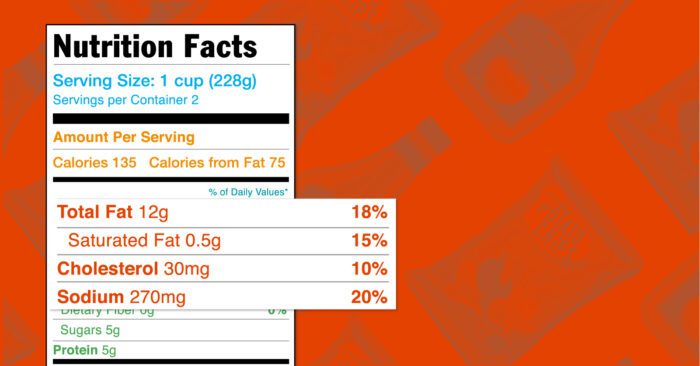
3. Know which nutrients slow you down
Keep an eye out for nutrients and additives that negatively affect your health. High amounts of these can leave you feeling sluggish, impact your immune system and drain your energy.
- Saturated and trans fats: Leads to high cholesterol which increases the risk of heart disease and stroke. Fatty beef, butter, cream and processed snacks can contain high amount of both types of fat.
- Sodium: Results in high blood pressure and can lead to thirst and dehydration. Bacon, chips, microwaved snacks and canned goods can contain lots of sodium. Note: Some nutrition labels list “salt” instead.
- Sugar: Leads to insulin resistance, which increases the risk of Type 2 diabetes. Most people think of sugar in sweets, candy and soda. However, sugars like high fructose corn syrup and sucrose can hide in condiments and packaged foods.
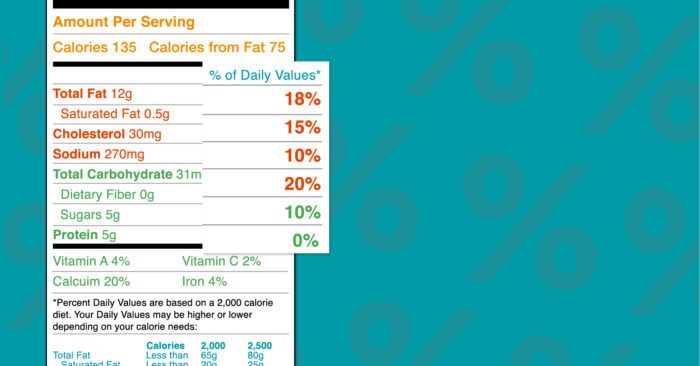
4. Reference the % daily value
The percentage of daily value is usually printed along the right-side of each nutrition label. The percentage is based on the amounts of nutrients recommended for Americans aged four and older to eat every day. 5% or less is low while 20% or more is high.
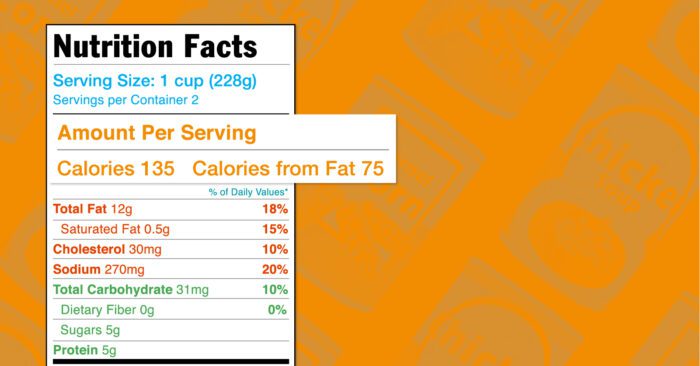
5. Check the calories
Your daily caloric intake will vary from person to person. However, it’s important to note where those calories come from. Pulling calories from nutrient-rich vitamins and minerals will help you to stay fuller longer and benefit your overall health.
With these tips to decode a nutrition label in your toolbelt, cracking the nutrition-label code will no longer feel like solving a puzzle. Approach your next trip to the grocery store with the ease of a seasoned shopper! If you’re looking for an easy guide to take with you, check out our nutrition label cheat sheet.





